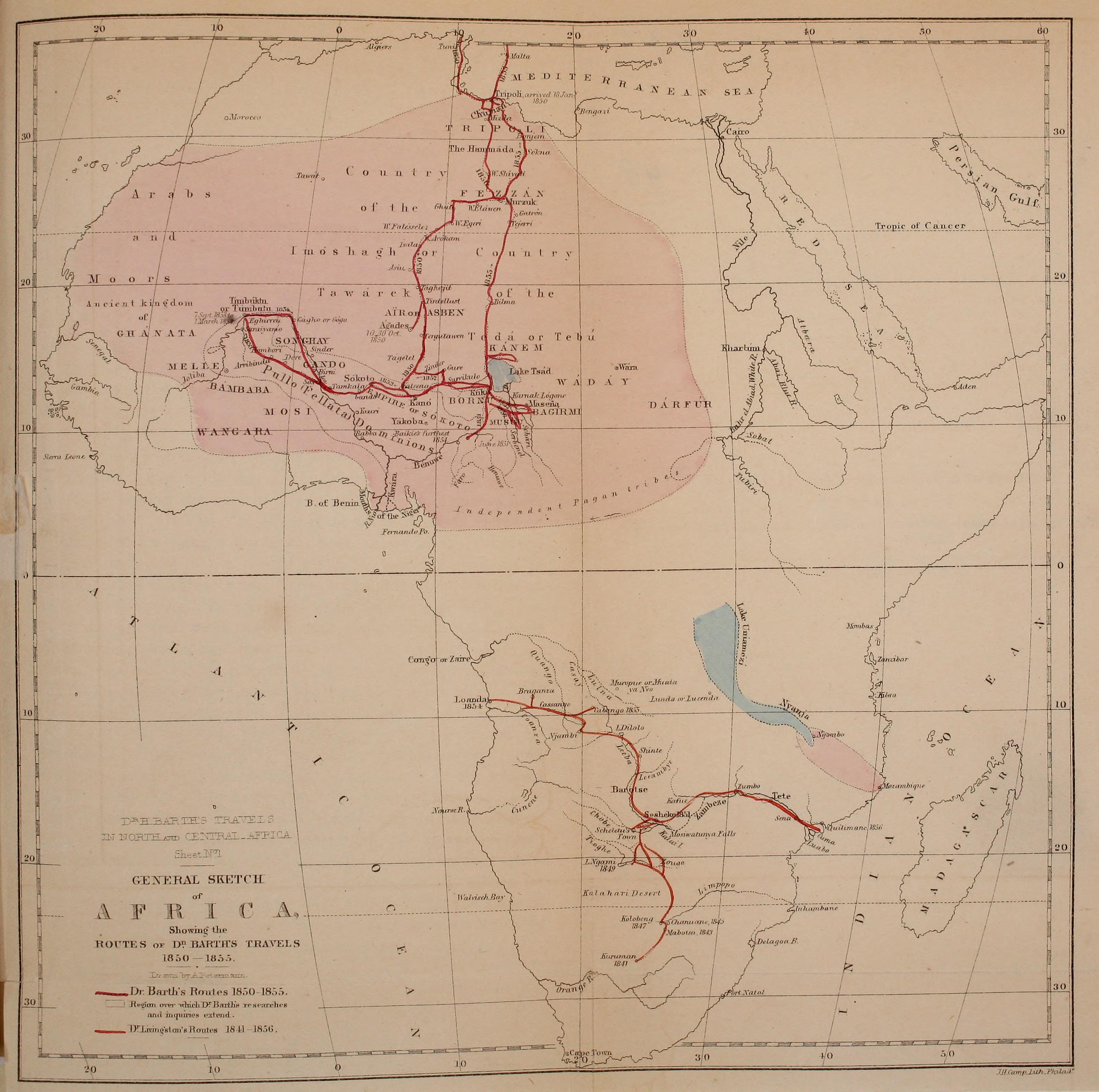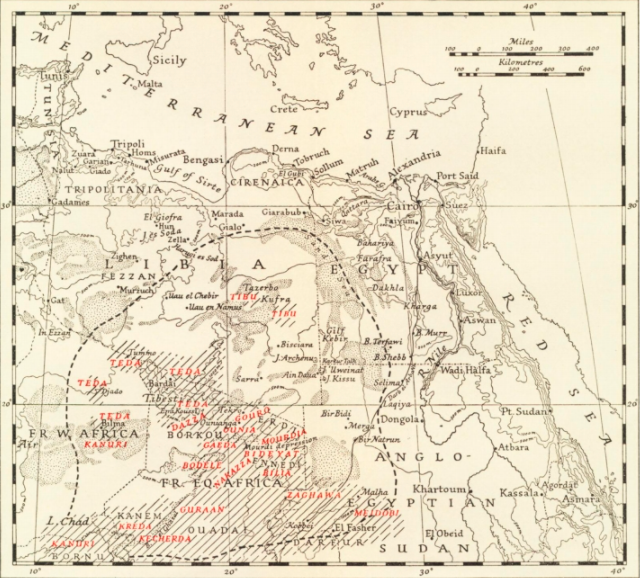|
Sultanate Of Damagaram
The Sultanate of Damagaram was a Muslim pre-colonial state in what is now southeastern Niger, centered on the city of Zinder. History Rise The Sultanate of Damagaram was founded in 1731 (near Mirriah, modern Niger) by Muslim Kanouri aristocrats, led by Mallam (r. 1736–1743). Damagaram was at the beginning a vassal state of the decaying Kanem-Bornu Empire, but it quickly came to conquer all its fellow vassal states of western Bornu. In the 1830s, the small band of Bornu nobles and retainers conquered the Myrria kingdom, the Sassebaki sultanates (including Zinder). By the 19th century, Damagaram had absorbed 18 Bornu vassal states in the area. Zinder rose from a small Hausa village to an important center of the Trans-Saharan trade with the moving of the capital of Damagaram there in 1736. The large fortress of the southeast central city (Birini) was built shortly thereafter, and became a major hub for trade south through Kano (city), Kano and east to Bornu Empire, Bornu. T ... [...More Info...] [...Related Items...] OR: [Wikipedia] [Google] [Baidu] |
Maradi, Niger
Maradi is the second largest city in Niger and the administrative centre of Maradi Region. It is also the seat of the Maradi Department and an Urban Commune. History Originally part of Katsina, a Hausa state, it became independent in the 19th century. From the early 19th century, Maradi was home to one of several Hausa traditional rump states, formed by rulers and nobility who fled the rise of the Sokoto Caliphate.Geels, Jolijn, (2006) ''Bradt Travel Guide – Niger'', pgs. 203–212 Elements of the Katsina ruling class continued to claim the area as the seat of a Katsina state in exile ruled by the ''Sarkin Katsina Maradi''. Maradi was constrained by the more powerful Gobir exilic state to the west, the Sultanate of Damagaram based at Zinder to the east, and Sokoto to the south. The arrival of the French in 1899 saw the bloody destruction of the town by the Voulet-Chanoine Mission, but later the town recovered to become an important regional centre of commerce by the 1950s. Th ... [...More Info...] [...Related Items...] OR: [Wikipedia] [Google] [Baidu] |
Marius Gabriel Cazemajou
Marius-Gabriel Cazemajou (10 December 1864 – 5 May 1898) was a French officer who died during an expedition in West Africa. Early years Marius Gabriel Cazemajou was born on 10 December 1864 in Marseille. He studied at the Polytechnique. Cazemajou was commissioned in the French army in 1886. He was made an officer of the Engineers. He was promoted to the rank of captain in 1889. In 1893 Cazemajou made an Expedition from the south of Tunisia into the Fezzan around Ghadames. He later served in French Indochina, then in 1896 was assigned to French West Africa. He served under Paul Caudrelier in 1897 when the French occupied the Black Volta region. Chad expedition The slaver Rabih az-Zubayr had conquered the Bornu Empire, and France feared a threat to its borders in West and Equatorial Africa. In 1897 Cazemajou was given the task of entering into negotiations with Rabih az-Zubayr. The 37-man expedition to Say and then onward to Lake Chad was launched in December 1897. The rep ... [...More Info...] [...Related Items...] OR: [Wikipedia] [Google] [Baidu] |
Rabih Az-Zubayr
Rabih az-Zubayr ibn Fadl Allah or Rabih Fadlallah ( ar, رابح فضل الله ,رابح الزبير ابن فضل الله), usually known as Rabah in French (c. 1842 – April 22, 1900), was a Sudanese warlord and slave trader who established a powerful empire east of Lake Chad, in today's Chad. Born around 1842 to an Arabic tribe in Halfaya Al-Muluk, a suburb of Khartoum, he first served with the irregular Egyptian cavalry in the Ethiopian campaign, during which he was wounded. When Rabih left the army in 1860s, he became the principal lieutenant of the Sudanese slaveholder Sebehr Rahma. Lieutenant of al-Zubayr (1870–1879) In the 19th century, Khartoum had become a very important Arab slave market, supplied through companies of ''Khartumi'' established in the region of Bahr el Ghazal, where they resided in zarības ( ar, زريْـبـة), thornbush-fortified bases kept by bāzinqirs (firearm-equipped slave soldiers). The warlord and slaveholder al-Zubayr Rahma Mans ... [...More Info...] [...Related Items...] OR: [Wikipedia] [Google] [Baidu] |
Robin Law
Robin C. C. Law (born 1944) is a British people, British African studies, Africanist and since 2009 Emeritus Professor of the History of Africa at the University of Stirling. He obtained a Bachelor of Arts, BA degree in Literae Humaniores at the University of Oxford in 1967 and a Doctor of Philosophy, PhD in History at the University of Birmingham in 1972. As a researcher, he worked at the University of Lagos, Nigeria (1966-1969) and at the Centre of West African Studies of the University of Birmingham (1970-1972). He joined the University of Stirling in 1972, and was subsequently Lecturer, Senior Lecturer, and Reader, becoming Professor of African History in 1993. He was a Visiting Fellow at the African Studies Centre Leiden (1993-1994), and a Visiting Professor at York University, Canada (1996-1997) and the Hebrew University of Jerusalem (2000-2001). Law received the Distinguished Africanist award of the African Studies Association of the UK for 2010. Publications Law published ma ... [...More Info...] [...Related Items...] OR: [Wikipedia] [Google] [Baidu] |
Gun Carriage
A gun carriage is a frame and mount that supports the gun barrel of an artillery piece, allowing it to be maneuvered and fired. These platforms often had wheels so that the artillery pieces could be moved more easily. Gun carriages are also used on ships to facilitate the movement and aiming of large cannons. Early guns The earliest guns were laid directly onto the ground, with earth being piled up under the muzzle end of the barrel to increase the elevation. As the size of guns increased, they began to be attached to heavy wooden frames or beds that were held down by stakes. These began to be replaced by wheeled carriages in the early 16th century. Smoothbore gun carriages From the 16th to the mid-19th century, the main form of artillery remained the smoothbore cannon. By this time, the trunnion (a short axle protruding from either side of the gun barrel) had been developed, with the result that the barrel could be held in two recesses in the carriage and secured with an iro ... [...More Info...] [...Related Items...] OR: [Wikipedia] [Google] [Baidu] |
Kel Gres
Kel Gres is a tribal confederation of Tuareg people, Tuareg clans (or "''Drum-groups''"). In the modern era, they have mostly lived in south central Niger, although they are known to have inhabited the Aïr Mountains prior to the 17th century. As pastoralists, the Kel Gress also have a tradition seasonal transhumance cycle which takes them far from their more settled communities in the Zinder Region, Zinder and Tahoua Regions. See also *Tuareg people, Tuareg **Kel Adagh **Kel Ahaggar **Kel Ajjer **Kel Ayr **Kel Owey **Aulliminden: Kel Ataram (west) and Kel Dinnik (east) References Portions of this article were translated from the French language Wikipedia article :fr:Kel Gress, 2008-08-26. {{authority control Tuareg confederations Ethnic groups in Niger ... [...More Info...] [...Related Items...] OR: [Wikipedia] [Google] [Baidu] |
Heinrich Barth
Johann Heinrich Barth (; ; 16 February 1821 – 25 November 1865) was a German explorer of Africa and scholar. Barth is thought to be one of the greatest of the European explorers of Africa, as his scholarly preparation, ability to speak and write Arabic, learning African languages, and character meant that he carefully documented the details of the cultures he visited. He was among the first to comprehend the uses of oral history of peoples, and collected many. He established friendships with African rulers and scholars during his five years of travel (1850–1855). After the deaths of two European companions, he completed his travels with the aid of Africans. Afterwards, he wrote and published a five-volume account of his travels in both English and German. It has been invaluable for scholars of his time and since. Early life and education Heinrich Barth was born in Hamburg on 16 February 1821. He was the third child of Johann Christoph Heinrich Barth and his wife Charlotte ... [...More Info...] [...Related Items...] OR: [Wikipedia] [Google] [Baidu] |
Hausa Language
Hausa (; /; Ajami: ) is a Chadic language spoken by the Hausa people in the northern half of Nigeria, Ghana, Cameroon, Benin and Togo, and the southern half of Niger, Chad and Sudan, with significant minorities in Ivory Coast. Hausa is a member of the Afroasiatic languages, Afroasiatic language family and is the most widely spoken language within the Chadic languages, Chadic branch of that family. Ethnologue estimated that it was spoken as a first language by some 47 million people and as a second language by another 25 million, bringing the total number of Hausa speakers to an estimated 72 million. In Nigeria, the Hausa-speaking film industry is known as Hausa-language cinema, Kannywood. Classification Hausa belongs to the West Chadic languages subgroup of the Chadic languages group, which in turn is part of the Afroasiatic languages, Afroasiatic language family. Geographic distribution Native speakers of Hausa, the Hausa people, are mostly found in southern ... [...More Info...] [...Related Items...] OR: [Wikipedia] [Google] [Baidu] |
Toubou
The Toubou or Tubu (from Old Tebu, meaning "rock people") are an ethnic group native to the Tibesti Mountains that inhabit the central Sahara in northern Chad, southern Libya and northeastern Niger. They live either as herders and nomads or as farmers near oases. Their society is clan-based, with each clan having certain oases, pastures and wells. The Toubou are generally divided into two closely related groups: the Teda (or Téda, Toda) and the Dazagara (or Dazzaga, Dazagada, Daza). They are believed to share a common origin and speak the Tebu languages, which are from the Saharan branch of the Nilo-Saharan language family. Tebu is divided further into two closely related languages, called ''Tedaga'' (Téda Toubou) and ''Dazaga'' (Dazaga Gouran). Of the two groups, the Daza, found to the south of the Teda, are more numerous. The Toubou people are also referred to as the Tabu, Tebu, Tebou, Tibu, Tibbu, Toda, Todga, Todaga, Tubu, Tuda, Tudaga, or Gorane people. The Dazaga are ... [...More Info...] [...Related Items...] OR: [Wikipedia] [Google] [Baidu] |
Arab
The Arabs (singular: Arab; singular ar, عَرَبِيٌّ, DIN 31635: , , plural ar, عَرَب, DIN 31635: , Arabic pronunciation: ), also known as the Arab people, are an ethnic group mainly inhabiting the Arab world in Western Asia, North Africa, the Horn of Africa, and the western Indian Ocean islands (including the Comoros). An Arab diaspora is also present around the world in significant numbers, most notably in the Americas, Western Europe, Turkey, Indonesia, and Iran. In modern usage, the term "Arab" tends to refer to those who both carry that ethnic identity and speak Arabic as their native language. This contrasts with the narrower traditional definition, which refers to the descendants of the tribes of Arabia. The religion of Islam was developed in Arabia, and Classical Arabic serves as the language of Islamic literature. 93 percent of Arabs are Muslims (the remainder consisted mostly of Arab Christians), while Arab Muslims are only 20 percent of the ... [...More Info...] [...Related Items...] OR: [Wikipedia] [Google] [Baidu] |





